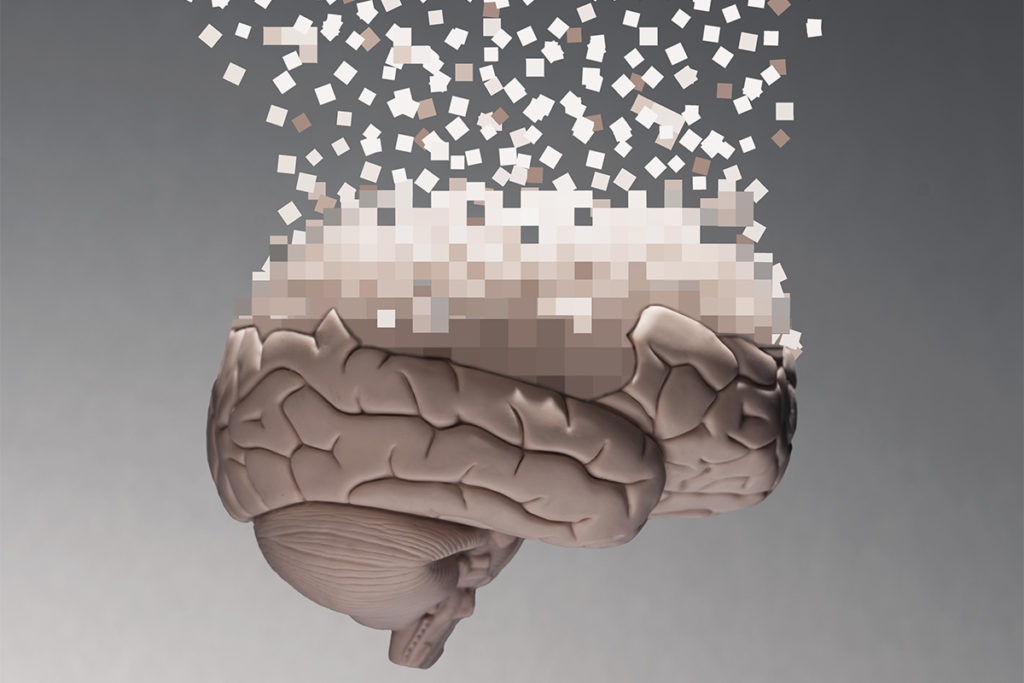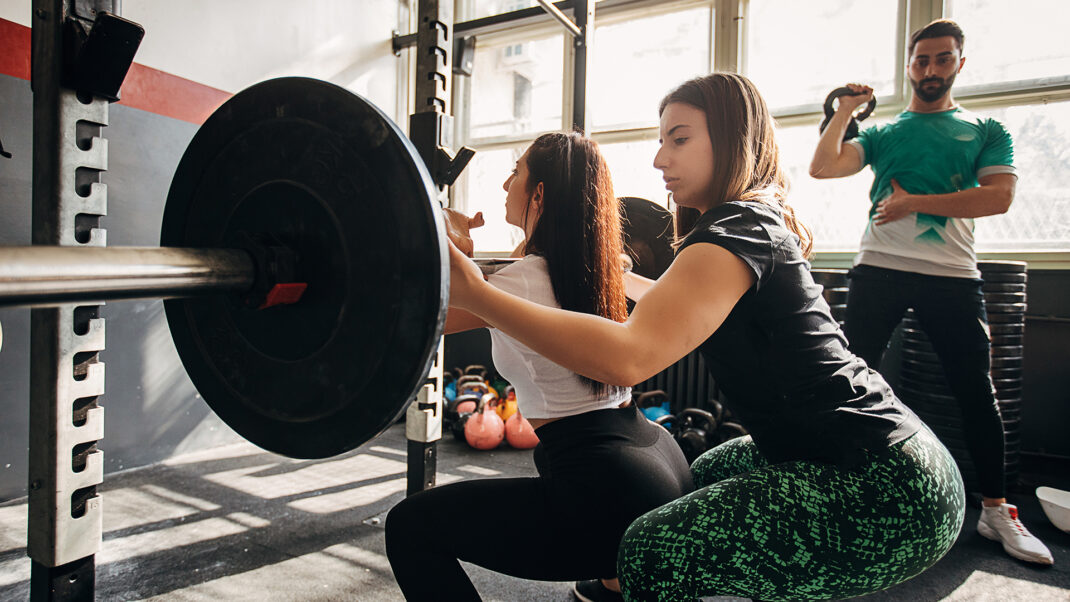The Ankle Joint
Anatomy, common injuries and postrehab strategies.
Achilles tendon
calcaneus
fibula
tibia
talus
lateral ankle ligaments
ligaments
phalanges
plantar arch
The bones involved in ankle articulation include the tibia, fibula and talus. The tibia and fibula are the long bones of the lower leg; the fibula, a relatively thinner bone, is lateral to the tibia. These two bones are bound together by the ligaments and the interosseous membrane. The talus is a wedge-shaped bone that fits into the mortise formed by the bound tibia and fibula (Moore 1992). Multiple ligamentous attachments, muscular attachments and a fibrous capsule maintain the articulation of all three bones.
Three separate ligaments stabilize the lateral aspect of the ankle joint: the anterior talofibular, calcaneofibular and posterior talofibular ligaments. Medially, support comes from a collective group of ligaments known as the deltoid ligament.
Inversion/Eversion. These horizontal movements in the sagittal plane most often occur in combination with supination and pronation. The tibialis anterior and gastrocnemius are the primary muscles working during inversion; and the fibularis (peroneus) brevis and longus are primarily responsible for eversion (Moore 1992).
Plantar Flexion/Dorsiflexion. Plantar flexion and dorsiflexion are the movements involved when pointing the foot down and flexing it up, respectively. The gastrocnemius, soleus, tibialis posterior, fibularis brevis and longus, flexor hallucis longus, flexor digitorum longus and plantaris are the primary muscles acting in plantar flexion; and the tibialis anterior, extensor digitorum longus, extensor hallucis longus and peroneus tertius are primarily responsible for dorsiflexion (Moore 1992).
Pronation/Supination. In simple terms, pronation occurs when the plantar side of the foot moves toward the floor surface in weight bearing, and supination occurs when the plantar side moves away from the floor surface. Pronation involves abduction, eversion and some dorsiflexion, whereas supination involves adduction, inversion and plantar flexion (Moore 1992).
Individuals who suffer from ankle instability may complain of frequent sprains and difficulty with cutting and pivoting movements. Ankle instability is usually a sequel to chronic ankle sprains or poorly treated acute ankle sprains. Instability occurs when the ligamentous and muscular constraints are unable to support the ankle during athletic or complex movement demands (Kibler et al. 1998). Repeated episodes of instability will result in diffuse pain, decreased performance and, sometimes, swelling.
Inversion ankle sprains, caused when the foot rolls inward and under the ankle, are suffered more commonly than eversion sprains. Inversion sprains result in damage to the lateral ligaments of the ankle (the anterior talofibular, calcaneofibular and posterior talofibular ligaments).
In many cases, a client with ankle instability will experience weakness during eversion and plantar flexion. In planning a treatment program, a physical therapist or an athletic trainer will focus primarily on increasing the stability of the ankle joint through appropriate muscle strengthening, proprioceptive exercises, agility workouts and, at times, a brace (Kibler et al. 1998).
Before making the transition to postrehab exercise, the client should have no signs of pain, swelling or discomfort.
Warm-Up. Always include a proper lower-body warm-up (5 minutes). Suggested activities include biking, brisk walking, and/or exercising on an elliptical trainer.
Strengthening and Proprioception.
1. calf raises (3 sets, 20–40 reps)
2. eversion exercises with elastic tubing (3 sets, 15 reps)
- With the client seated on a chair, wrap a loop of the tubing around the ball of the foot. Hold the end of the tubing with tension, pulling medially away from the client’s foot (away from the big toe).
- While keeping the thigh still, the client moves the foot out and up against the resistance of the tubing. The goal is to move the pinky side of the foot laterally and superiorly into eversion without rotating the hip or moving the thigh.
3. jumping (3–5 reps, 30–60 seconds per rep)
- Progress from both legs to one leg.
4. rotational jumping (3 sets, 10–15 reps)
- Jump, turning 90 degrees in the air, and land (see above).
- Return to the original position by jumping 90 degrees in the opposite direction.
5. foam roller lunges (3 sets, 10–15 reps per side)
- Lunge onto a half-roller surface that has the flat side down.
Functional Training. Exercises should be specific to the client’s primary sport or activity. The key to progression is the absence of symptoms of instability.
1. agility drills
- Exercises may include cutting, skipping or running.
- Progress from straight-line activities to multidirectional activities.
- All exercises should be pain free.
- Exercises should be performed on stable surfaces at first and then progress to unstable, softer surfaces as tolerated.
- If pain returns or the client feels the ankle “give way” at all, he or she should be referred back to a physician or healthcare professional.
Individuals with this diagnosis may complain of pain with jumping or running; stiffness in the morning; or a sense of sluggishness in the affected leg.
The Achilles tendon is the largest tendon in the human body and can usually withstand a tremendous amount of force. Injury may occur after a rapid “ramp up” in a training regimen, such as hill work or stair climbing; as a result of overuse; or because of lack of flexibility. Since many Achilles tendon injuries may involve a partial tendon tear and the symptoms are similar to those of other conditions, seeing a physician or other healthcare professional is crucial for a proper diagnosis.
If the diagnosis is Achilles tendinitis, recovery will generally include rest from all weight-bearing exercise; medication; stretching; appropriate exercises; friction massage; and various other indicated modalities, such as ultrasound, laser treatment, etc. (Moore 1992).
Clients with Achilles tendinitis will often have dorsiflexion inflexibility and calf muscle weakness. During the symptomatic phase of the condition, they will progress (under the supervision of a healthcare professional) from open-chain exercises and stretching through closed-chain exercises, including heel raises and squats. Then they will progress to their activity of choice before moving on to a postrehab program.
Warm-Up. Warm up the lower body with 5 minutes of biking, brisk walking, or exercising on an elliptical trainer.
Stretching. Perform 3 reps on each side, holding each for 30 seconds.
1. gastrocnemius stretch
2. soleus stretch
3. hamstring stretch
Strengthening. Focus on concentric and eccentric loading of the calf muscles to restore gastrocnemius and soleus function (Kibler et al. 1998).
1. unilateral calf raises (3 sets, 10–15 reps)
2. clocks (3 reps, 4 seconds lowering, 2 seconds raising)
- Stand on one leg on a 6- to 10-inch step.
- Without dropping the hip, lower the working leg to a 12 o’clock position (forward) just short of the floor surface by bending the support leg’s knee. Push through the heel of the support leg to rise back to the starting position.
- Lower the exercising leg again, but this time angle it slightly toward the right at the 1 o’clock position. Continue around the clock.
- Always keep the hips facing forward.
3. calf presses (3 sets, 10–15 reps)
- Use a leg press machine, but rest the ball of the foot on the bottom edge of the plate.
- Choose running shoes carefully. Visit a reputable shoe store to find an appropriate fit for both activity and foot type.
- Warm up sufficiently before running or sprinting.
- Stretch before and after activity.
- Avoid hill and stair workouts if possible.
- Avoid rapid increases in workout duration and intensity.
Individuals with this diagnosis may feel pain throughout the ankle joint. Arthritic symptoms may appear later in life owing to wear and tear on joints over time. Degenerative arthritis (also referred to as osteoarthritis) is an inflammation in joints due to this wear and tear.
A healthcare professional will develop a strengthening and stretching program. Individuals in acute pain may also receive treatment modalities like ultrasound or laser, as well as manual therapy, to reduce the symptoms.
Strengthening the ankle joint in all planes will increase overall muscular strength and build support for shock absorption around the joint. Strong muscles will help support the joint and make it more stable, enabling clients to move more easily and with less pain. Stretching is an important aspect of the postrehab program, since the client’s joint range of motion is likely limited.
Warm-Up. Perform a relatively longer warm-up (10 minutes). Appropriate activities include biking, walking and water exercise.
Stretching.
- calf stretches (3 reps per side, holding for 30 seconds each)
- ankle pumping up and down (20–40 times, 3 reps per side)
- ankle circles, clockwise and counterclockwise (10–20 times each direction, 3 reps per side)
Strengthening/Endurance/Balance. Water exercise is generally the most comfortable mode of activity for people with arthritis. The buoyancy of water enables individuals to exercise with less joint stress and discomfort. Appropriate water exercises include the following:
- calf raises (3 sets, 10–15 reps per side)
- cross-over walking, back and forth (3 sets, 1 minute each)
- single-leg stance (3 reps, holding for 15–30 seconds each)
- toe raises (3 sets, 10–15 reps), rising on the heels while maintaining upright posture
Clients interested in a land-based strengthening program will generally do best in non-weight-bearing scenarios—for example, using elastic tubing or seated weight machines for ankle dorsiflexion and plantar flexion.
- Avoid sudden increases in intensity; gradually build up the program.
- Choose comfortable, supportive shoes that fit the feet and the chosen activity.
- If a joint feels hot, avoid exercise. Exercise can make a swollen, hot joint feel worse.
- Don’t overdo (Eustice & Eustice 2005).
rotational jumping A
rotational jumping B
unilateral calf raise
12 o’clock
6 o’clock
9 o’clock
Always refer the client back to a physician if one of these situations occurs:
- Pain or swelling arises, or the joint feels “hot.”
- The client cannot bear weight on the lower extremity.
- The client feels as if the ankle is “giving out.”
toe raise
References
Kibler, W.B., et al. 1998. Functional Rehabilitation of Sports and Musculoskeletal Injuries (pp. 273–84). Gaithersburg, MD: Aspen.
Moore, K.L. 1992. Clinically Oriented Anatomy (3rd ed., pp. 395–430). Baltimore: Williams & Wilkins.





